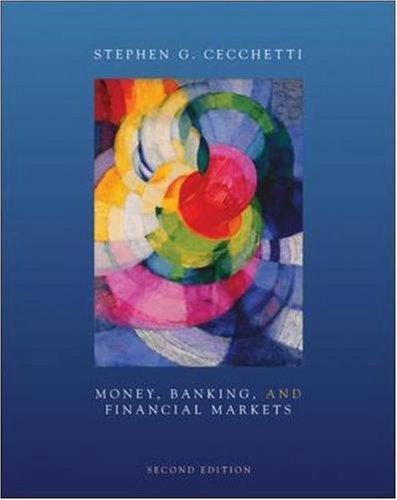Question
Figure 1. Image Depicting Relationships Between Rate of Return and Cost of Capital As noted, commercial enterprises exist in order to earn a satisfactory risk-adjusted
Figure 1. Image Depicting Relationships Between Rate of Return and Cost of Capital
As noted, commercial enterprises exist in order to earn a satisfactory risk-adjusted rate of return on investors' capital. Full stop. It's that simple. This is the genius of capitalism, which, for all of its pros and cons, has proved to be the best economic model for promoting the general welfare. The economic logic of capitalism says that investors will reward managers who operate businesses in such a way as to produce rates of return (return on net assets, or RONA) that exceed the weighted average cost of capital (WACC). That's the blue wedge in the above image. If managers produce a RONA that is consistently less than WACC (the red wedge), they get fired; or the business gets sold; or both.
Assume alternative scenarios A and B. In Scenario A, the enterprise manages its order-to-cash (O2C) cycle in an efficient manner whereby its O2C cycle is 30 days. Doing so produces a RONA (of 15%) that exceeds the WACC, such that the enterprise is positioned in the blue wedge of Figure 1. In Scenario B, the enterprise is positioned in the red wedge of Figure 1 not because it produces less profit (the NOPAT, item # 1 in Table 1 is the same $150 amount in both scenarios), but instead because the slower O2C cycle forces the enterprise to operate with more invested capital. Table 1 illustrates these relationships:
Table 1. Comparison of RONA Performance According to O2C Performance
# Description
Scenario A:
30-Day Order to Cash
Scenario B:
45-Day Order-to-Cash
1 Net Operating Profit After Tax (NOPAT)
$150
$150
2 Invested Capital
$1000
$1500
3 RONA= # 1 divided by # 2
15%
10%
4 Weighted Average Cost of Capital (WACC)
14%
14%
5 # 3 minus # 4
+1%
-4%
6 Position in Figure 1
Group 1
Group 3
Question 1Do the relationships illustrated in Table 1 suggest why employers care about maximizing the efficiency with which they manage the O2C cycle? Please explain.
Question 2Does your answer to Question 1 indicate why employers favor the candidacy of job applicants who can demonstrate that, on Day One, they have a threshold-level awareness of how an enterprise resource planning (ERP) system can be used to minimize the O2C cycle? Please explain.
Question 3Recall that an ERP is a paradigmatic example of a management information system. With that in mind, please indicate and explain which of the course objectives (see the Appendix) are implicated in our answers to questions 1 and 2.

APPENDIX: Course Objectives
The course is designed to meet the following objectives:
Understanding the role of information systems in organizations
Understanding the various information systems used


Understanding the technical infrastructure for information systems
Understanding the purpose and basic techniques of data management
Understanding how to use appropriate query and search technologies to locate and retrieve pertinent business information
Understanding the role of information technologies in solving business problems and exploiting business opportunities

Step by Step Solution
There are 3 Steps involved in it
Step: 1

Get Instant Access to Expert-Tailored Solutions
See step-by-step solutions with expert insights and AI powered tools for academic success
Step: 2

Step: 3

Ace Your Homework with AI
Get the answers you need in no time with our AI-driven, step-by-step assistance
Get Started


